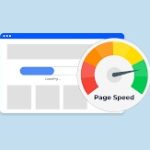Service-based businesses rely on a steady flow of leads to drive long-term growth, and Google Ads stands out as a powerful tool in any marketing strategy. By strategically placing ads in search results, websites, and videos, you can connect with potential customers who are actively seeking your services. With the right bidding strategy, relevant keywords, and well-crafted campaigns, service providers can generate qualified leads and boost conversion rates. In this blog, we’ll explore how Google Ads can support your business goals—from building a strong online advertising platform to refining your strategy for better results.

Understanding the Importance of Google Ads for Lead Generation
In a world where billions of searches happen daily, businesses that tap into Google Ads gain real-time visibility for their product or service. Unlike organic search, paid advertising yields immediate results, positioning your offer before the audiences who express search intent through search queries. This advertising channel allows you to set your own budget and tailor your targeting to a wide range of factors—like location, interests, and device type. By carefully planning your campaign goals, you can guide potential customers through the entire customer journey, increasing chances of conversion.
For service-oriented businesses that don’t sell a physical product, generating leads is the ultimate goal. Online lead generation requires connecting with users at the right time in their decision-making process. That’s where Google Ads excels—serving targeted ads to the exact audience segment searching for solutions. Using tools like Custom Audiences and search engine data ensures you’re only paying for clicks from truly interested customers.
Types of Google Ads
Search Ads
Search Ads appear at the top of Google Search results, triggered by keywords that align with a user’s query. These are ideal for service-based businesses because they capture high-intent search behaviors—people actively looking for a plumber, a consulting firm, or legal aid, for example. With Search Ads, you can push your services to the forefront of your target audience, matching their search terms to your offers. This approach can drastically improve your chances of conversion.
Display Ads
Meanwhile, Display Ads show up on a network of websites and mobile apps that partner with Google. By harnessing Display Network placements, you can expand your brand reach, presenting compelling visuals—like images or banners—to relevant audiences in your marketing funnel. Although these users might not be actively searching, you can spark brand awareness and potentially trigger future conversions. With remarketing from search or customers with display remarketing, you can focus on re-engaging site visitors for higher conversion rates.
Video Ads
Using videos in your advertising approach can bring your services to life. Video Ads on YouTube or partner sites let you highlight key features of your service—whether it’s a snippet of how you assist customers, or a deeper look into your unique solutions. Short, engaging video content can be leveraged in bumper ads or Discovery ads for capturing attention quickly. Coupled with a robust call to action and strong brand presence, video content can encourage leads to move from curiosity to commitment.
Conducting Effective Keyword Research
All successful campaigns begin with relevant keywords. By understanding what search volume and how competitive keywords your potential audience is looking for, you can hone your approach. Focusing on long-tail keywords—like “emergency plumbing services in Toronto” rather than just “plumber”—often yields better conversion because it aligns with more specific search intent. Meanwhile, you should filter out irrelevant keywords using negative keywords to reduce budget wastage. This step is crucial for improved campaign performance and cost-effective marketing.
Leverage the Google Ads Keyword Planner to assess keyword performance, explore new ideas, and see industry-specific keywords. By examining search behaviors and analyzing search queries, you’ll glean insights about your audience segment. Combine these data-driven decisions with your own market knowledge for a more comprehensive approach to lead generation.
Crafting Compelling Ad Copy
When your ads appear in search results, you only have a limited time to grab attention. High-impact ad copy featuring a strong CTA, mention of benefits, and clarity around your services is essential. Use calls to action like “Contact Us Today” or “Get a Free Quote” to encourage immediate user action. Consider referencing your unique feature or business advantage—like “24/7 Support” or “Certified Specialists”—to build credibility.
Adding dynamic text such as Dynamic Search Ads can also adapt your headlines to specific search terms. This approach ensures potential customers see hyper-relevant copy. Combined with Responsive Search Ads, you’ll be able to test multiple variations of your headlines and descriptions to discover which combination yields the best conversion results.
Targeting the Right Audience
Demographic Targeting
Google Ads allows you to refine your targeting based on demographics like age, gender, parental status, or household income. If you’re marketing tax advisory services, focusing on higher-income brackets might yield higher conversion rates. Alternatively, if your offerings cater to families, customizing your approach around that demographic can trim down unqualified leads while boosting engagement from your core customer segment.
Geographic Targeting
For local service-based businesses, it’s often beneficial to hone in on specific neighborhoods, cities, or even radius targeting around your location. This approach ensures your budget invests in the areas most likely to respond, cutting unnecessary cost. If your field team can only serve a certain region, limiting your advertising to that area is a no-brainer. By analyzing performance data, you can refine or expand your geotargeting to optimize lead generation.
Leveraging Ad Extensions for Increased Visibility
Extensions like Callout extensions, Sitelink, or Call extensions are small additions that can significantly enhance your ad. They provide extra information—like phone numbers, business addresses, or direct links to specialized landing pages. With ad extensions, you stand out among the competition, offering multiple pathways for user interaction. For instance, a direct phone link is crucial if immediate phone calls are your ultimate goal.
Using location-based info with Google Maps integration also helps local leads find your store or office quickly. By presenting more data within your ad, your CTR can improve, and you have a better shot at capturing a user’s interest.

Setting Up Your Campaign Structure
Organizing Ad Groups
A well-structured campaign is critical for clarity and optimization. Group your ads by theme or service type (for example, “emergency plumbing,” “kitchen remodeling,” “water heater installation”). Each ad group can then focus on relevant keywords for that segment, ensuring your ad copy aligns with user search intent. This method fosters easier management, better budget control, and improved ad relevance, as each group focuses on a single domain of your services.
Choosing the Right Bidding Strategy
Your bid strategy affects how your ads compete in auctions. If your campaign goals revolve around maximizing clicks, a “Maximize Clicks” approach can help. Alternatively, if you want more leads, strategies like Target CPA or Target ROAS let Google AI automate your bids to hit desired cost-per-acquisition or revenue goals. These Smart Bidding strategies can free up time, letting you concentrate on higher-level marketing tasks like landing page experience improvements.
Monitoring Performance Metrics
Click-Through Rate (CTR)
CTR gauges how often users who see your ad actually click, reflecting your ad’s relevance and initial interest. Low CTR might indicate subpar ad copy, mismatched keywords, or a disconnect with user intent. By improving your messaging or negative keywords, you can see a direct boost in CTR and, ultimately, a better shot at conversion.
Return on Ad Spend (ROAS)
ROAS indicates the revenue generated for every dollar spent on Google Ads. For service-based businesses, you can track the lead’s journey from click to signed contract, assigning a value for each new qualified lead. If your ROAS is below targets, you might reconsider your bidding approach, your daily budgets, or focus on more specialized long-tail keywords. Maximizing ROAS ensures your advertising spend fuels actual growth.
Implementing A/B Testing for Optimization
Testing is the cornerstone of data-driven decisions. By trialing multiple ad headlines, descriptions, or CTAs, you can isolate the elements that generate the most leads. Conduct A/B tests on landing pages too—variations in layout, color scheme, or imagery can affect bounce rates and conversion. Tools like Google Marketing Platform or third-party solutions help track results accurately.
Beyond the creative, test different bidding or attribution models. Evaluate if last-click or non-last click attribution models yield more precise insights into which step triggered the conversion. Constant optimization keeps your campaigns fresh and cost-effective.
Utilizing Conversion Tracking to Measure Success
Conversion tracking is crucial for measuring how many leads or phone calls your ads generate. By placing a Google Tag or pixel on your website, you can see which clicks lead to specific actions—like form submissions or scheduled appointments. Pairing conversion data with your bidding approach can help you zero in on what’s truly driving your business forward.
Attribution in Google Ads ensures credit goes to the right click or keyword. For businesses with long sales cycles or multiple marketing channels, a robust attribution strategy (like multi-touch or data-driven) clarifies which ads or search terms are vital to closing deals. This knowledge fosters better targeting decisions and budget allocations.
Adapting Strategies Based on Performance Data
The best advertising strategies are iterative. Once you gather enough campaign data, it’s time to refine. If certain ads or keywords generate high-quality leads, funnel more of your campaign budgets there. If others yield unqualified leads or a poor average conversion rate, weed them out or reduce their bids. Leverage audience signals for further customization—like Custom Audiences or remarketing lists. By tapping data-driven decisions and analyzing real-time metrics, you maintain forward momentum while controlling costs.
Overcoming Common Challenges in Lead Generation
Budget Constraints
Small businesses or new entrepreneurs may hesitate to spend heavily on digital ads. However, even a modest budget can go far if targeted precisely. Focus on certain times of day—like business hours or peak times—and relevant location targeting. Minimizing budget wastage is achievable through negative keywords or by capping spend on low-performing ads.
Competition Analysis
For competitive industries, CPC (cost-per-click) can be high. A thorough competitor analysis helps you discover competitive keywords and long-tail phrases where you can differentiate. Keep an eye on your competitor’s brand terms, but approach carefully to avoid trademark conflicts. By aligning your unique selling proposition with your ad copy, you stand out from the crowd even in a saturated market.
How LinkLumin can Help Your Business with Lead Generation?
At LinkLumin, we specialize in data-driven decisions and a strategic approach to Google Ads. Our experts can guide you through the entire development of your campaign—from initial keyword analysis to advanced attribution methods and constant optimization. Whether your type of service is local or global, we tailor your campaigns to reach the right audience at the right time. Combining best practices in Responsive Search Ads, Performance Max, and even advanced features like Dynamic Search Ads, we help you refine your marketing funnel, boost your conversion rates, and make every ad dollar count.

Conclusion
Lead generation with Google Ads is a powerful, cost-effective way for service-based businesses to connect with potential customers. By mastering keyword selection, carefully structuring campaigns, and continuously optimizing with conversion tracking, you can steadily improve your ROI. Whether you leverage Search Ads, Display Ads, or Video Ads, aligning your campaign’s bidding strategy with your business goals is key to sustainable growth. LinkLumin offers expert solutions for refining these campaigns, enabling you to make informed decisions on how best to target your ideal audience—and ultimately drive more leads and conversions.
Tags




